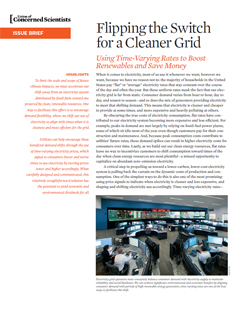Take a look at your electric bill. If you’re like most Americans, you’re probably paying the same rate for electricity each hour of the day and each month of the year.
Takeaways:
- Consumers aren’t currently motivated to use electricity when it’s cheapest for the grid
- Time-varying rates could save consumers money
- Wind and solar would benefit from revised rate pricing
What you won’t see is how the true cost of generating electricity varies on an hourly, daily, and monthly basis. For example: supplying enough electricity to power air conditioners on the hottest summer afternoons may require power plants to be built and maintained that aren’t used for the other 360 or so days of the year.
But most consumers don’t see any variation in the electricity rates they pay, and so aren’t motivated to change their habits. The result is an inefficient system that costs too much and generates more carbon pollution than necessary.
Time-varying electricity rates that fluctuate based on supply and demand can help. By pinning the cost of electricity to its true economic impacts, we can increase the grid’s efficiency, decrease costs, and better utilize clean power sources like wind and solar.




